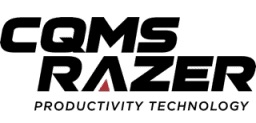Exploring the Roof Leak Detector Market
The roof leak detector market is gaining traction as building owners and facility managers increasingly recognize the importance of proactive maintenance and damage prevention. Roof leaks can lead to significant structural damage, costly repairs, and operational disruptions, making early detection critical. As a result, the demand for advanced roof leak detection systems is on the rise.
Market Drivers
Several factors are driving the growth of the roof leak detector market. Firstly, the increasing incidence of extreme weather events due to climate change has heightened the need for reliable leak detection solutions. Heavy rainfall, storms, and snow can cause roof damage, leading to leaks that compromise building integrity. Advanced leak detection systems help in identifying leaks early, preventing extensive damage.
Secondly, the growing awareness of the economic benefits of preventive maintenance is fueling market growth. Roof leak detectors enable building owners to detect and address issues before they escalate into major problems, thereby reducing repair costs and extending the lifespan of roofing systems. This proactive approach is particularly important in commercial and industrial settings, where roof leaks can disrupt operations and lead to significant financial losses.
Technological Advancements
Technological advancements are playing a pivotal role in the evolution of the roof leak detector market. Modern leak detection systems leverage a variety of technologies, including sensors, thermal imaging, and IoT (Internet of Things). These systems provide real-time monitoring and alert capabilities, allowing for prompt response to potential leaks. For instance, sensors can detect moisture levels and temperature changes, while thermal imaging can identify areas of heat loss that may indicate leaks.
Additionally, the integration of IoT has revolutionized the market by enabling remote monitoring and data analysis. IoT-enabled leak detectors can send alerts to building managers via mobile devices or cloud-based platforms, ensuring immediate action can be taken regardless of location. This connectivity and real-time data accessibility are critical for large facilities and multi-building complexes.
Get More Information Here@ https://www.surveyreports.jp/
Emerging Applications and Opportunities in the Feldspar and Nepheline Syenite Market
Feldspar and Nepheline Syenite are naturally occurring minerals that are widely used in a variety of applications, including ceramics, glass, paints, coatings, and plastics. In recent years, there has been an increase in demand for Feldspar and Nepheline Syenite due to the emergence of new applications and opportunities in various industries. In this article, we will discuss the emerging applications and opportunities in the Feldspar and Nepheline Syenite market.
Emerging Applications:
Construction Materials: Feldspar and Nepheline Syenite are widely used in the construction industry for the production of various construction materials such as concrete, asphalt, and mortar. The addition of Feldspar and Nepheline Syenite improves the strength, durability, and workability of these materials. These minerals also help in reducing the carbon footprint of the construction industry by replacing some of the cement and other materials.
Read More Information Here@ https://www.kdmarketinsights.c....om/reports/feldspar-
Refining: Feldspar and Nepheline Syenite are used in the refining of aluminum and other metals. These minerals help to reduce the melting point of the metals, making them easier to refine. They also help to improve the quality and purity of the metals.
Water Filtration: Feldspar and Nepheline Syenite are used in water filtration systems to remove impurities and contaminants from the water. They are used as a filter medium in various filtration systems such as slow sand filters, rapid sand filters, and pressure filters. They are preferred over other filter media due to their high porosity, which allows for better water flow and filtration.
Emerging Opportunities:
Automotive Industry: The automotive industry is an emerging opportunity for Feldspar and Nepheline Syenite. These minerals are used in the production of catalytic converters, which help to reduce the emissions of harmful gases from automobiles. The demand for catalytic converters is expected to increase due to the tightening of emission regulations and the growing demand for electric vehicles.
Electronics Industry: The electronics industry is another emerging opportunity for Feldspar and Nepheline Syenite. These minerals are used in the production of ceramic capacitors, which are widely used in electronic devices such as smartphones, computers, and televisions. The increasing demand for electronic devices is expected to drive the demand for Feldspar and Nepheline Syenite in the electronics industry.
Pharmaceutical Industry: Feldspar and Nepheline Syenite are used in the production of pharmaceuticals such as antacids and toothpaste. These minerals are used as abrasives in toothpaste and as excipients in antacids. The growing demand for pharmaceuticals is expected to drive the demand for Feldspar and Nepheline Syenite in the pharmaceutical industry.
Green Technologies: The growing demand for green technologies is an emerging opportunity for Feldspar and Nepheline Syenite. These minerals are used in the production of solar panels, wind turbines, and fuel cells. They are used as a filler in the polymer electrolyte membrane in fuel cells, which helps to increase the conductivity and durability of the membrane. The increasing demand for green technologies is expected to drive the demand for Feldspar and Nepheline Syenite.
Conclusion:
In conclusion, the Feldspar and Nepheline Syenite market is expected to witness significant growth in the coming years due to the emergence of new applications and opportunities. The construction industry, automotive industry, electronics industry, pharmaceutical industry, and green technologies are some of the emerging opportunities for Feldspar and Nepheline Syenite. The increasing demand from these industries is expected to drive the demand for Feldspar and Nepheline Syenite, which in turn, will boost the growth of the market.


